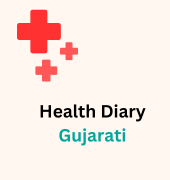Breast Cancer in India
India has seen a rise in breast cancer cases in recent years. It is the most common cancer among Indian women, with approximately 1 in 28 women at risk of developing it during their lifetime. Early detection and awareness can significantly reduce mortality rates.
Risk Factors
Gender: Women are at a higher risk.
Age: The risk increases with age.
Family History: A family history of breast cancer can increase your risk.
Genetics: Mutations in BRCA1 and BRCA2 genes can predispose individuals.
Hormone Replacement Therapy: Long-term use may increase risk.
Signs and Symptoms
Lump in the breast or underarm
Change in breast size or shape
Pain or tenderness, though many lumps are painless
Unexplained skin changes
Nipple discharge (other than breast milk)
Dimpled or reddened skin
Early Detection and Diagnosis
Early detection can save lives. Regular breast self-exams, clinical breast exams, ultrasounds and mammograms are essential for early diagnosis. Discuss screening options with your healthcare provider.
Treatment Options
Treatment depends on the stage and type of breast cancer, biomarkers and your overall health. Your healthcare team will tailor a treatment plan for you. Options include:
Surgery: Surgery is often the initial treatment for breast cancer and involves removing the tumor and, in some cases, nearby lymph nodes. There are two main types of surgical procedures:
Lumpectomy (Breast-Conserving Surgery): This involves removing only the tumor and a small margin of surrounding tissue, preserving as much of the breast as possible. It is usually recommended for early-stage breast cancer.
Mastectomy: A mastectomy is the surgical removal of the entire breast. There are different types of mastectomy, including a simple mastectomy (removal of the breast tissue), a modified radical mastectomy (removal of the breast tissue and some lymph nodes), and a radical mastectomy (removal of the breast tissue, chest muscles, and lymph nodes).
Radiation Therapy: Radiation therapy uses high-energy X-rays or other forms of radiation to destroy cancer cells or shrink tumors. It is often recommended after a lumpectomy to reduce the risk of cancer recurrence.
Chemotherapy: Chemotherapy involves the use of drugs to kill cancer cells or prevent their growth and is typically administered intravenously. It may be used before or after surgery, depending on the cancer's stage and characteristics. Chemotherapy can also be used to treat metastatic breast cancer that has spread to other parts of the body.
Hormone Therapy: Some breast cancers are hormone receptor-positive, which means they are influenced by hormones like estrogen and progesterone. Hormone therapy aims to block these hormones or their effects on cancer cells.
Targeted Therapy: Targeted therapy drugs are designed to target specific molecules or proteins involved in cancer growth.
Immunotherapy: Immunotherapy is a relatively new treatment option for breast cancer. It aims to boost the body's immune system to recognize and attack cancer cells.
Palliative Care: Palliative care focuses on improving the quality of life for patients with advanced or metastatic breast cancer. It addresses pain management, symptom control, emotional support, and overall well-being.
Coping and Support
A breast cancer diagnosis can be overwhelming. Seek support from family, friends, or support groups. Mental health is as important as physical health during treatment.
Prevention
Reduce your risk by maintaining a healthy lifestyle:
-Regular exercise
-A balanced diet
-Avoid alcohol consumption
-Avoid smoking
-Breastfeeding
If possible.
Know your family’s medical history so you can get screened early




